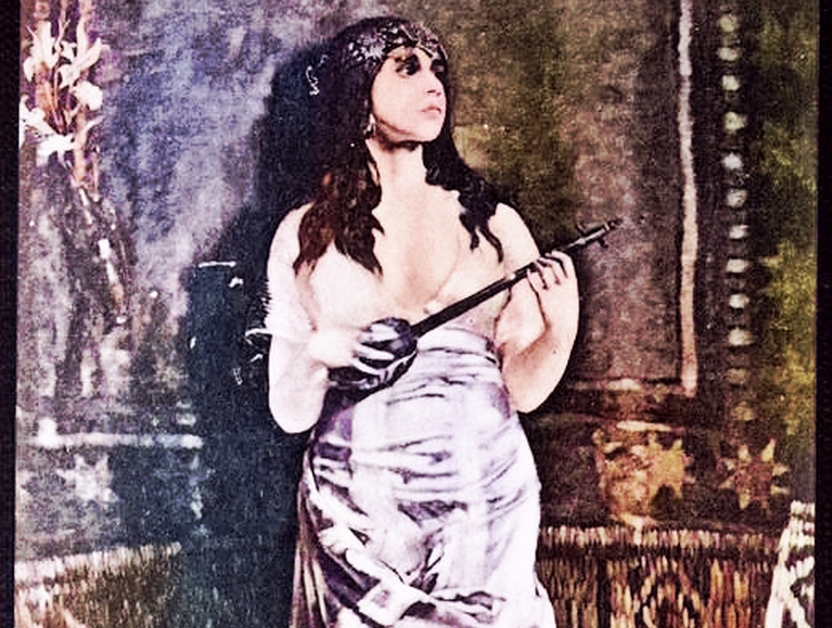Esther Rosenthal-Shneiderman (1896 Częstochowa – 1989 Jerusalem) was a Yiddish educator and journalist. In the early 1930s, in Birobidzhan, she was an editor of Yiddish children’s periodicals — Yunger shloger (Young Shock Worker, 1931) and Oktyaberl (Child of the October Revolution, 1932) - and an author or co-author of several textbooks for Soviet Yiddish schools. Esther Rosenthal-Shneiderman received her primary education at a Jewish public school, studied in a Polish gymnasium, and in 1918 enrolled at Warsaw University. She worked as a teacher at the Central Yiddish School Organization (TSYSHO), and was active in the Polish Communist movement. In 1926 she moved to the Soviet Union and soon headed the Communist Party organization at the Kiev-based Yiddish academic center – The Institute for Jewish Proletarian Culture (IJPC). She was appointed a research fellow at the institute’s Pedagogical Section and also lectured in the Kiev Pedagogical Institute. In 1934 she followed her close friend and the director of IJPC, Josef Liberberg, to Birobidzhan. There she worked in the Pedagogical College, and met her future husband Nison Rosenthal. In 1938, she moved to Nalchik, where she worked as a teacher of mathematics, and later as a lecturer in the Kabardino-Balkarian State Pedagogical Institute. After World War II Esther and Nison married, and lived in Kiev. In 1958 they repatriated to Poland, and moved to Israel in 1962. In Jerusalem, Esther Rosenthal-Shneiderman was affiliated with the Hebrew University’s Center for Research and Documentation of East European Jewry. Nison Rosenthal (1898 Vilnius – 1970 Jerusalem) was a Jewish educator, poet, and publicist in Lithuania. In the 1920s he worked as a teacher in Jewish schools in various Lithuanian towns. In the late 1920s he was escaped communist persecution and moved to Riga, where worked as a teacher at a Jewish special school until 1934. In 1935, he came to the Soviet Union as a political emigré, and settled in Birobidzhan. The private collection of Esther Rosenthal-Shneiderman and Nison Rosenthal contain their personal documents and materials related to their activities as educators, public activists and writers. The collection includes: memories; correspondence with friends, relatives, cultural activists, etc.; private photos of the family and various historical photos; Esther’s and Nison’s short biographies, articles, notes and chapters from books; documents about Jewish cultural life in the Ukraine during late 1920s - the first half of the 1930s --
Rosental Esther & Nison
Enlarge text Shrink text
| Title |
Rosental Esther & Nison. |
|---|---|
| Additional Titles |
Yunger shloger Oktyaberl |
| Contributors |
NisanRozinṭahl ((Creator of the archive)) Y.Liberberg Abraham,Sutzkever 1913-2010 YosefPapyernikov Itzik,Kipnis 1896-1974 Chone,Shmeruk 1921-1997 YosefḲerler Institut Evreiskoi Proletarskoi Kul'tury Tsentrale Yidishe Shul Organizatsye Hebrew University of Jerusalem. Centre for Research and Documentation of East-European Jewry |
| Host Item |
Rosental Esther & Nison - Private Collection |
| Level of Description |
Fonds Record |
| Biographical summary |
Esther Rosenthal-Shneiderman was a Yiddish educator, journalist, and editor of Yiddish children’s periodicals published in Birobidzhan. She was born in Częstochowa (Poland) in 1896, and her birth name was Treina-Estera Fuks. She attended a Heder religious school which was not common for girls at the time. She studied at a public Jewish elementary school and at the Polish Gymnasium. During WWI she was active in the Zionist-Socialist Workers party (SS). In 1918 she enrolled in Warsaw University, and worked as a teacher in the left-wing Central Yiddish School Organization (TSYSHO). In 1920 she joined the Polish Communist Party. In 1926 under threat of arrest for communist activity, she changed her name to Esther Shneiderman, and escaped to the Soviet Union. She settled in Kiev and worked in the Yiddish academic center, known in the 1930s as the Institute for Jewish Proletarian Culture (IJPC). In 1934, after her close friend and the director of IJPC, Josef Liberberg, was appointed chairman of the Soviet (council) of the Jewish Autonomous Region she moved to Birobidzhan. There she worked as a teacher in several schools, as a teacher in a pedagogocal college she headed the Birobidzhan Regional Pedagogical Labratory, and met her future husband Nison Rosenthal. In early 1930s, she edited the Yiddish children’s periodicals Yunger shloger (Young Shock Worker, 1931), and Oktyaberl (Child of the October Revolution, 1932). She was also an author and co-author of several textbooks for Soviet Yiddish schools. In 1938, after Josef Liberberg was arrested as a “Trotskyist and bourgeois nationalist” and executed, Esther Shneiderman moved to Nalchik. She worked as a teacher of mathematics, and later as a lecturer in the Kabardino-Balkarian State Pedagogical Institute. After World War II Esther and Nison Rosenthal got married, and lived in Kiev. Stalinist repressions of Yiddish cultural activists and Liberberg’s execution caused an ideological transformation in Esther Rozental-Shneiderman. She became a bitter critic of the Soviet regime and its policies toward Jews. In 1958 she and her husband repatriated to Poland. In 1962 they moved to Israel. In Jerusalem, Esther Rosenthal-Shneiderman was affiliated with the Hebrew University’s Center for Research and Documentation of East European Jewry. She published memoirs and books on the Jewish life and Yiddish culture in Ukraine and Birobidzhan. Nison Rosenthal (1898 Vilnius – 1970 Jerusalem) was a Jewish educator, poet, and publicist in Lithuania. In the1920s he worked as a teacher in Jewish schools in various Lithuanian towns: Tauragė, Telšiai, Žagarė, and Klaipėda (Memel). In the late 1920s he was arrested by the Lithuanian authorities for illegal political left-wing activities, and escaped to Riga. There he worked as a teacher at a Jewish special school until 1934. In 1935, he came to the Soviet Union as a political emigré, and settled in Birobidzhan. |
| Ownership history |
The materials were transferred from the Centre for Research and Documentation of East European Jewry at Hebrew University of Jerusalem |
| Language Note |
Yiddish Russian Polish Hebrew some English |
| National Library system number |
990043420410205171 |
| Links |
פרטים על מיקום החומר/Location&access |
-
-
-
-
-
-
-
-
-
-
-
-
-
-
-
-
-
-
-
- Show Next 10 Items out of 480
- Show All
-
-
תנאי השימוש:
Appropriate Conditions of Use Have Been Established for Every Archive File
The terms of use appear on the archival file page on the National Library website.
For more information about the copyright status inquiry service and terms of use for items from the Library’s collections, click here.
MARC RECORDS
Tags
- Jews -- Education -- Soviet Union
- Jews, East European -- History -- 20th century
- Jews -- Ukraine -- Social life and customs
- Autonomous soviet socialist republics
- Birobidzhan (Russia)
- Częstochowa (Poland)
- Jerusalem (Israel)
- Kaunas (Lithuania)
- Kyïv (Ukraine)
- Nalʹchik (Russia)
- Rīga (Latvia)
- Vilnius (Lithuania)
Have more information? Found a mistake?

 Sign in with Google
Sign in with Google
 Sign in with Facebook
Sign in with Facebook





